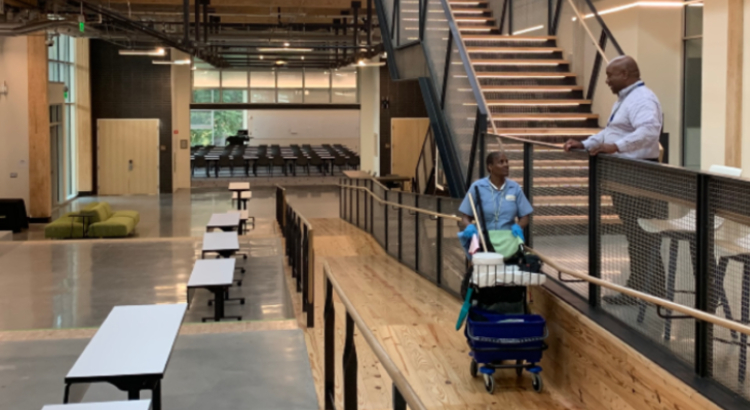A commonplace impulse kicks in when we’re faced with infectious microbes: Obliterate them with chemical disinfectants.
Sometimes that approach works. But it also carries potential drawbacks. Disinfectants don’t necessarily address the problem, and they may introduce the additional hazard of exposing occupants to toxins.
While surface disinfection is regarded as an important part of any effort to protect building occupants from COVID-19, there’s little disagreement among public health experts that hand washing, social distancing, masks and other behavior modifications are more crucial. Touched surfaces are a suspected, but unproven, vector for the disease’s transmission. And the judicious use of disinfectants is only part of a broader cleaning regimen.
In other words, disinfection is necessary, but it can provide a false a sense of false security.
Then, there’s the question of what kinds of disinfectants. Since coronavirus began to spread in February and March, poison-control centers have reported sharp increases in emergency calls related to disinfectant use. That’s not surprising when you consider the hazards presented by mixing certain chemical disinfectants or even by using them in under-ventilated rooms. Increased rates of cancer and other long-term health problems associated with the use of some disinfectants are more difficult to track but may be a bigger problem.
The Living Building Challenge’s Health & Happiness Petal mandates non-toxic cleaning protocols as part a “Healthy Indoor Environment Plan” that restricts toxic materials coming into buildings. The good news is that there are plenty of ways to disinfect frequently touched surfaces without relying on toxic chemicals. Some options are conventional disinfectants that rely on more benign chemicals. Others include more innovative approaches, such as electrochemically activated water.
In the photo above, Kendeda Building Maintenance and Operations Director Marlin Gottshalk consults with a custodian in the building. The building’s custodial staff underwent specialized training in the use of non-toxic cleaning and disinfection for the Living Building project on the Georgia Tech campus. Among disinfection techniques approved by Georgia Tech are a hypochlorous system called Annihilar.
— Ken Edelstein
This post is part of a series on “Nine COVID-combating features in a Living Building.” Click here to view the main article.


